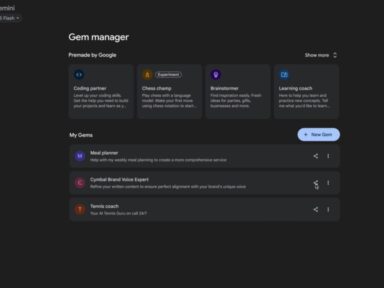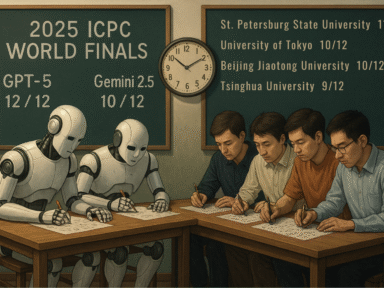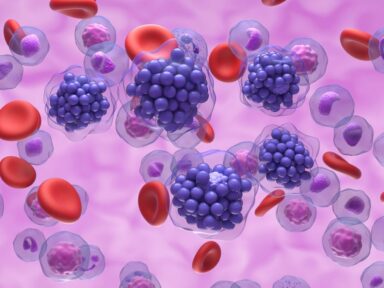• The new tool integrates generative AI capabilities that can help automate repetitive tasks, generate design alternatives, and provide intelligent suggestions based on project parameters.
• Forma is designed to work seamlessly with Autodesk’s existing suite of products, creating a more unified ecosystem for design professionals.
• Early adopters report significant time savings and enhanced creative possibilities, with some users cutting certain workflow steps by up to 70%.
• The technology represents Autodesk’s strategic shift toward AI-augmented design processes while maintaining human creativity at the center of the workflow.
Autodesk has unveiled a groundbreaking AI-powered design assistant that promises to revolutionize how designers, architects, and creators work across industries. The new tool, Autodesk Forma, leverages advanced artificial intelligence to automate tedious tasks, generate design alternatives, and provide intelligent suggestions that could dramatically improve productivity for professionals in various design disciplines.
This latest addition to Autodesk’s suite of creative tools represents a significant leap forward in how AI can enhance rather than replace human creativity, offering a glimpse into the future of design where technology and human ingenuity work in perfect harmony.
How Autodesk’s AI Assistant Transforms Design Workflows
Autodesk Forma integrates seamlessly with the company’s existing software ecosystem, including industry standards like AutoCAD, Revit, and 3ds Max. The AI assistant functions as an intelligent collaborator that understands design intent and can suggest improvements or alternatives based on specified parameters.
One of the most impressive features is the tool’s ability to learn from user behavior and adapt to individual working styles. As designers interact with the system, the AI becomes more attuned to their preferences, gradually becoming a more effective assistant that anticipates needs and offers relevant suggestions.
“We’ve developed this technology to enhance human creativity, not replace it,” said an Autodesk representative. “Our goal is to eliminate the tedious aspects of design work so professionals can focus on the creative decisions that truly require human judgment and aesthetic sensibility.”
The system can automatically generate multiple design variations based on initial concepts, allowing designers to explore possibilities they might not have considered otherwise. It can also handle routine tasks like dimensioning, material specification, and even basic structural analysis, freeing up valuable time for higher-level creative thinking.
Real-World Applications Across Design Disciplines
Autodesk’s new AI assistant offers specialized functionality for different design disciplines, making it valuable across multiple industries. For architects, the tool can analyze building sites and suggest optimal placement and orientation based on environmental factors like sun exposure and wind patterns.
Industrial designers can benefit from the AI’s ability to suggest manufacturing-friendly modifications to product designs, potentially saving significant time and resources during production. The system can identify potential manufacturing challenges early in the design process and recommend alternatives that maintain design intent while improving manufacturability.
Graphic designers and visual artists aren’t left out either. The AI can generate color palettes, suggest layout improvements, and even help with typography selection based on project requirements and current design trends. It can analyze visual hierarchy and recommend adjustments to improve communication effectiveness.
Early adopters report significant productivity gains, with some users claiming to have reduced certain workflow steps by as much as 70%. A beta tester from an architectural firm noted, “What used to take us days now takes hours. The AI handles the repetitive tasks while we focus on the creative decisions that truly require our expertise.”
The Future of AI-Enhanced Design
Autodesk’s investment in AI technology signals a broader shift in how design tools are evolving to meet the demands of modern creators. Rather than presenting AI as a replacement for human designers, Autodesk positions their new assistant as an enhancement that amplifies human creativity.
The company has emphasized their commitment to ethical AI development, noting that all training data for the system was properly licensed and that the tool was designed with privacy considerations in mind. User data is protected, and the system does not share proprietary design information across different clients or projects.
Looking ahead, Autodesk plans to continue refining the AI assistant based on user feedback and evolving technology. Future updates may include more specialized tools for niche design disciplines and deeper integration with fabrication and manufacturing processes.
The release of this tool comes at a time when many creative professionals are concerned about AI’s impact on their careers. Autodesk’s approach offers a more collaborative vision of human-AI interaction, where technology handles routine tasks while human creativity remains the driving force behind meaningful design.
Industry analysts suggest that design professionals who embrace these AI-enhanced tools may gain significant competitive advantages in efficiency and creative output, while those who resist may find themselves at a disadvantage as client expectations evolve to match new technological capabilities.
What is Autodesk Forma?
Autodesk Forma is a new AI-powered design assistant that works with Autodesk’s suite of creative tools to automate repetitive tasks, generate design alternatives, and provide intelligent suggestions based on project parameters and user preferences.
Will Autodesk’s AI replace human designers?
No, Autodesk has designed their AI assistant specifically to enhance human creativity rather than replace it. The tool handles routine and repetitive aspects of design work, allowing professionals to focus more on creative decision-making that requires human judgment and aesthetic sensibility.
What types of design disciplines can benefit from this AI tool?
The AI assistant offers specialized functionality for various design disciplines including architecture, industrial design, product design, and graphic design. Each field can leverage different capabilities of the tool tailored to their specific workflow needs.
How does the AI learn and adapt to individual designers?
The system learns from user interactions and adapts to individual working styles over time. As designers use the tool, it becomes more attuned to their preferences and can better anticipate needs and offer more relevant suggestions specific to that user.
What productivity improvements can designers expect?
Early adopters report significant time savings, with some users claiming to have reduced certain workflow steps by up to 70%. The actual improvement will vary depending on the type of design work, complexity of projects, and how extensively the AI assistant is integrated into existing workflows.
How does Autodesk address privacy concerns with their AI tool?
Autodesk has emphasized their commitment to data privacy, noting that the system was designed with privacy considerations as a priority. User data is protected, and the system does not share proprietary design information across different clients or projects.
Is special training required to use Autodesk’s new AI assistant?
While the tool is designed to be intuitive, Autodesk provides training resources to help users maximize the benefits of the AI assistant. The learning curve is reportedly gentle for those already familiar with Autodesk products, as the AI integrates seamlessly with existing software interfaces.
















How would you rate AI Design Assistant: Autodesk’s Voice-Powered Tool Revolutionizes 3D Design?